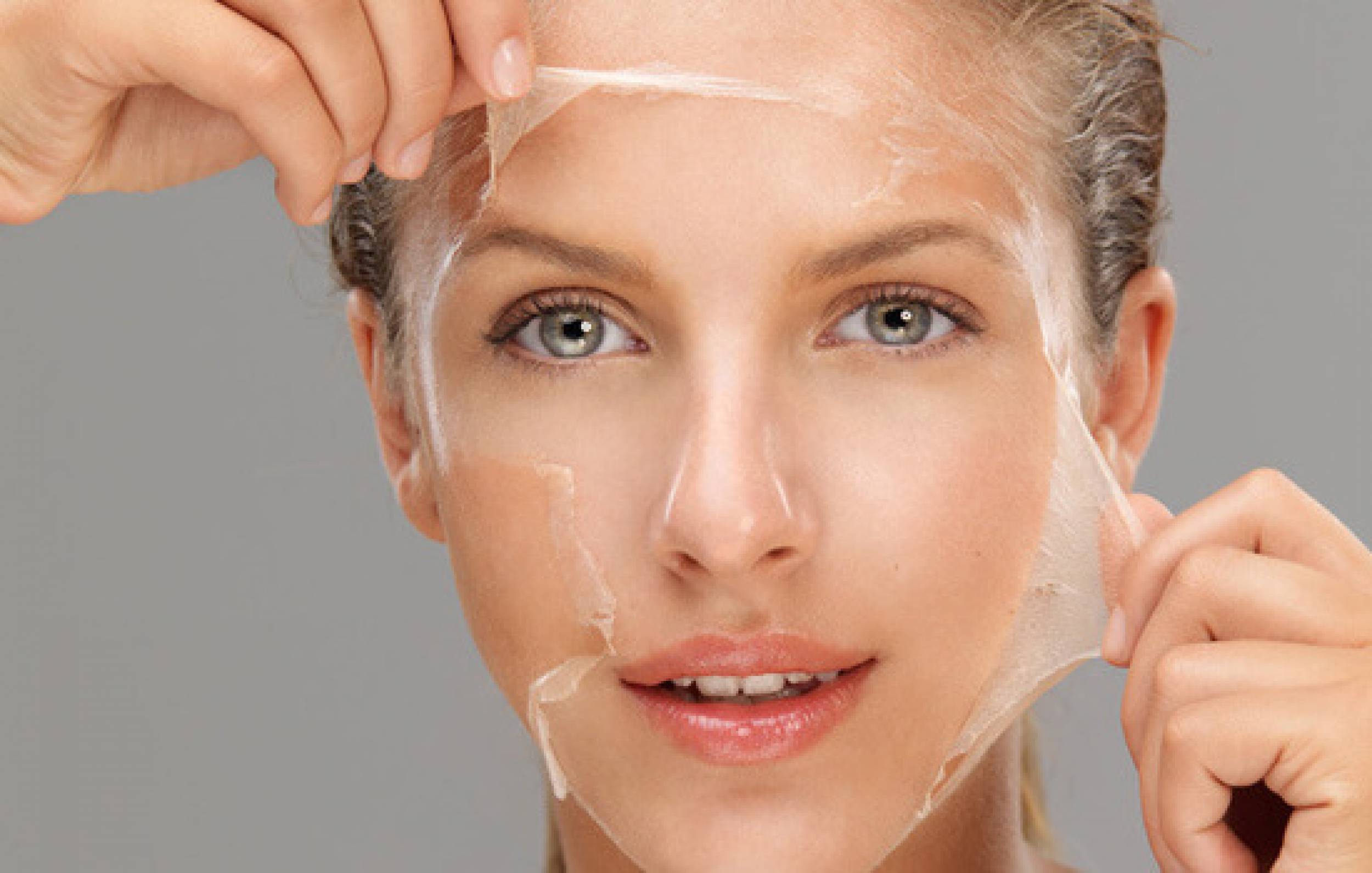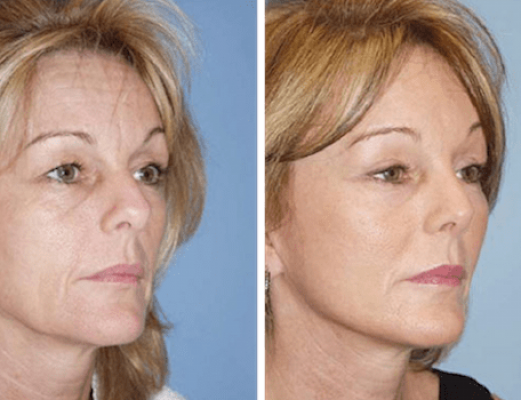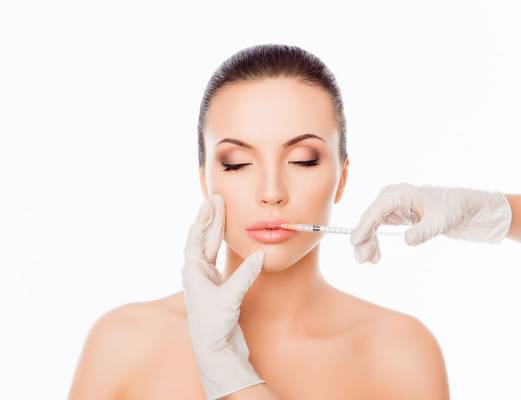Chemical Peel

Chemical Peel
Chemical peel is performed with a chemical solution to improve and smooth the texture of the facial skin by removing its damaged outer layers. It is helpful for individuals with facial blemishes, wrinkles and uneven skin pigmentation. Phenol, trichloroacetic acid (TCA) and alphahydroxy acids (AHAs) are used for this purpose. The precise formula used may be adjusted to meet each patient’s needs. Although chemical peel may be performed in conjunction with a facelift, it is not a substitute for such surgery, nor will it prevent or slow the aging process.
This page provides basic information about certain types of chemical peel treatments and the results you can expect from it. You should know though that a lot depends on your individual circumstances. Therefore, make sure you consult your doctor for any details that you do not understand once you and your plastic surgeon have decided on a specific peel program.
DECIDING IF CHEMICAL PEEL IS RIGHT FOR YOU
Chemical peel is most commonly performed for cosmetic reasons — to enhance your appearance and your self-confidence. Chemical peel may also remove pre-cancerous skin growths, soften acne facial scars and even control acne. Alphahydroxy acids (AHAs), such as glycolic, lactic, or fruit acids are the mildest of the peel formulas and produce light peels. These types of peels can provide smoother, brighter-looking skin for people who can’t spare the time to recover from a TCA peel. AHA peels may be used to treat fine wrinkling, areas of dryness, uneven pigmentation and acne. Various concentrations of an AHA may be applied weekly or at longer intervals to obtain the best result. Your doctor will make this decision during your consultation and as the treatment proceeds.
An alphahydroxy acid, such as glycolic acid, can also be mixed with a facial wash or cream in lesser concentrations as part of a daily skin-care regimen to improve the skin’s texture. Trichloroacetic acid (TCA) can be used in many concentrations, but it is most commonly used for medium-depth peeling. Fine surface wrinkles, superficial blemishes and pigment problems are commonly treated with TCA. The results of TCA peel are usually less dramatic than and not as long-lasting as those of a phenol peel. In fact, more than one TCA peel may be needed to achieve the desired result. The recovery from a TCA peel is usually shorter than with a phenol peel. All chemical peels carry some uncertainty and risk. Chemical peel is normally a safe procedure when it is performed by a qualified, experienced plastic surgeon. However, while some unpredictability and risks such as infection and scarring are infrequent, they are still possible. AHA peels may cause stinging, redness, irritation and crusting.
However, as the skin adjusts to the treatment regimen, these problems subside. With a TCA peel, your healed skin will be able to produce pigment as always; the peel will not bleach the skin. However, TCA-peel patients are advised to avoid sun exposure for several months after treatment to protect the newly formed layers of skin. Even though TCA is a mild feeling, it may also produce some unintended color changes in the skin.
PEEL FORMULAS AT A GLANCE
ALPHAHYDROXY ACIDS (AHA) USES
- Smoothes rough, dry skin
- Improves texture of sun-damaged skin
- Aids in control of acne
- Can be mixed with bleaching agent to correct pigment problems
- Can be used as TCA pre-treatment
CONSIDERATIONS
- A series of peels may be needed
- As with most peel treatments, sunblock use is recommended
TRICHLOROACETIC ACID (TCA) USES
- Smoothes out fine surface wrinkles
- Removes superficial blemishes
- Corrects pigment problems
CONSIDERATIONS
- Can be used on neck or other body areas
- May require pre-treatment with Retin-A or AHA creams
- Treatment takes only 10-15 minutes
- Preferred for darker-skinned patients
- Peel depth can be adjusted
- Repeat treatment may be needed to maintain results
- Sunblock must be used for several months
- Healing is usually quick; much quicker than with a phenol peel
PLANNING FOR A CHEMICAL PEEL
In some states, no medical degree is required to perform a chemical peel – even the strongest phenol peels. Many states have laws that permit non-physicians to administer certain peel solutions, but regulate the strengths which they are permitted to apply. You should be warned that phenol and TCA peels have been offered by inadequately trained practitioners claiming “miracle techniques” to rejuvenate the skin.
It is very important that you find a physician who has adequate training and experience in skin resurfacing. Your plastic surgeon may offer you a choice of peel techniques or suggest a combination of peels to give you the best result. During your initial consultation, it is important that you discuss your expectations with your plastic surgeon. Don’t hesitate to ask any questions or express any concerns that you may have.
Expect your plastic surgeon to explain the planned procedure in detail, including its risks and benefits, the recovery period and the costs. If you have a history of herpes, you should inform your physician prior to the procedure. Remember, chemical peel treatments are usually not covered by medical insurance unless they are performed for medical problems.
PREPARING FOR YOUR CHEMICAL PEEL
Your plastic surgeon will instruct you on how to prepare for your peel treatment. Sometimes Retin A – a prescription medication derived from Vitamin A – is used to pre-treat the skin. This thins out the skin’s surface layer, allowing the TCA solution to penetrate more deeply and evenly. If your skin doesn’t tolerate Retin-A pre-treatment, an AHA cream may be used instead.
Hydroquinone, a bleaching agent, is sometimes used in conjunction with Retin-A or AHA pre-treatment, especially if you have blotchy skin areas or pigmentation problems. You may have to spend a month or more in the pre-treatment phase before the doctor schedules your actual peel.
WHERE YOUR PEEL WILL BE PERFORMED
Most chemical peels may be safely performed in a plastic surgeon’s office.
TYPES OF ANESTHESIA
Local Anesthesia.
THE PEEL
AHA PEELS / TREATMENTS
Your doctor will apply the AHA solution to your cleansed facial skin, a process that usually takes no more than 10 minutes. No “after-peel” ointment or covering is required. Depending on the strength of the peel, periodic treatments may be necessary until the desired effects are achieved. For some patients, the application of an AHA-based face wash or cream once or twice a day at home will be sufficient to accomplish the desired goal. Your plastic surgeon may add Retin-A or a bleaching agent to your at-home treatment schedule. After several weeks of at-home use, your doctor will examine your skin to determine if your regimen needs adjustment.
TCA PEELS
Typically, the skin is thoroughly cleansed first. Then, the surgeon will carefully apply the phenol or TCA solution. You may feel a stinging sensation as the peel solution is applied, but this feeling will quickly pass. A full-face TCA peel usually takes no more than 15 minutes. Two or more TCA peels may be needed to obtain the desired result, and those may be spaced out over several months. Mild TCA peels may be repeated as often as every month.
AFTER YOUR TREATMENT
After an AHA peel, it is common to experience some temporary flaking or scaling, redness and dryness of the skin. However, these conditions disappear as the skin adjusts to treatment. After a TCA peel, your doctor may prescribe a mild pain medication to relieve any tingling or throbbing you may feel. If tape was used to cover your face, it will be removed after a day or two. A crust or scab will form on the treated area. To help your face heal properly, it is essential that you follow your doctor’s specific post-operative instructions. A TCA peel may also cause significant swelling, depending on the strength of the peel used.
GETTING BACK TO NORMAL
With an AHA peel, the temporary redness, flaking and dryness that you experience will not prevent you from working or engaging in your normal activities. A fresher and improved skin texture will result with continued AHA treatments. Remember, protecting your skin from the sun is also important following these mild acid peels. Ask your doctor to recommend a sunblock with adequate UVA and UVB protection and use it every day. With a TCA peel, the moderate discomfort and mild swelling you may experience will subside within the first week.
In about a week to ten days, your new skin will be apparent and you should be healed sufficiently to return to your normal activities. It is best to avoid sun exposure unless you are adequately protected. About two weeks after treatment, you may return to work and resume some of your normal activities. Your skin will be healed enough for you to wear makeup.
(For makeup tips, ask your plastic surgeon for the ASPS brochure on camouflage cosmetics.)



